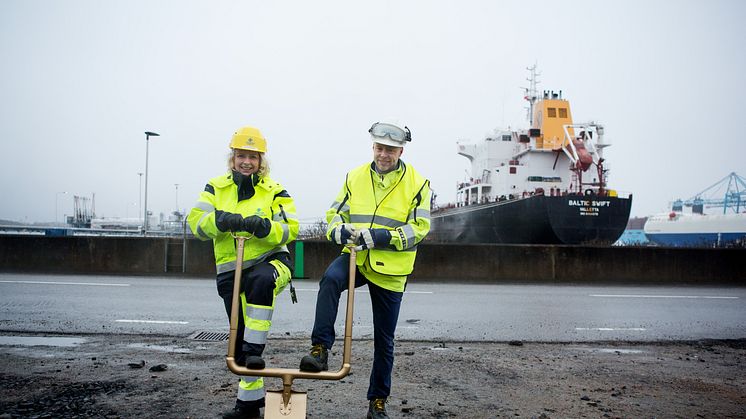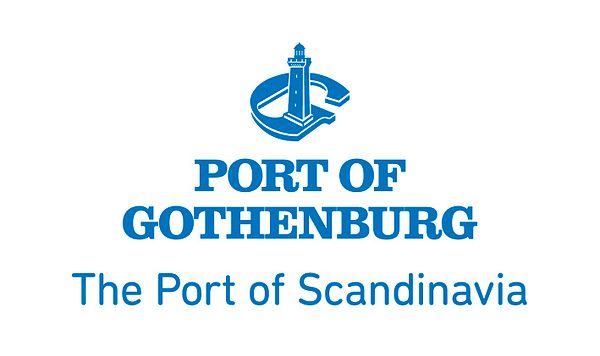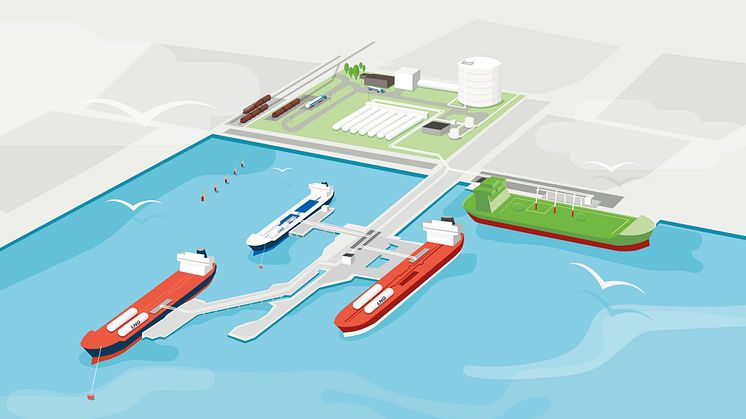
Press release -
Construction of land-based LNG facility under way at the Port of Gothenburg
Construction of a liquefied natural gas (LNG) facility is now under way at the Port of Gothenburg. The facility will open up new opportunities for LNG-fuelled ships that call at the Gothenburg Energy Port. It will become fully operational during 2018.
LNG is currently the cleanest marine fuel available to major shipping companies. The use of LNG as a fuel reduces emissions of sulphur, particles and heavy metals to a minimum. Emissions of nitric oxide are reduced by 80 per cent. The EU has already highlighted LNG as a key marine fuel for the future.
LNG as marine fuel is increasingly used in the world as global sulphur regulations become increasingly stringent. The Port of Gothenburg has made considerable progress in promoting its use. The first LNG bunkering took place at the Port of Gothenburg in autumn 2016, and since then operating regulations and routines have been developed and efficiency has been improved, resulting in a steady rise in the number of LNG bunkering operations.
Time-efficient bunkering
Today, Skangas is supplying vessels with LNG using a ship-to-ship bunkering system at the Port of Gothenburg. Skangas has now been joined by Swedegas, which owns and runs the Swedish gas transmission network. Swedegas will expand the number of LNG options at the port with the construction of a facility that will ensure safe, rapid and effective landside LNG bunkering whilst vessels are loading and discharging at the Energy Port.
“With both Skangas and Swedegas operating at the Port of Gothenburg, we have two companies that complement each other with different offerings. Shipping lines now have a further incentive to consider switching to LNG,” said Jill Söderwall, Vice President and Head of Commercial Operations at the Port of Gothenburg Energy Port.
Scalable facility with more choices
The facility will be scalable and can be adapted to the needs of the customers. Gas purchasers will also be able to choose their supplier. LNG will arrive at the facility by trailer or in containers, and will be distributed via a 450-metre vacuum-insulated cryogenic pipeline to the quayside.
The facility marks the first step in the construction of a broader solution for the gas infrastructure at the Port of Gothenburg, with the potential to connect to the gas transmission network. In time, Swedish industry and land transport could also make use of the facility.
“As is the case with the gas transmission network, in which both natural gas and biogas can be transported, the new facility will be flexible and can also be used for the storage and transport of renewable gas. Customers with access to the transmission network can already choose biogas, and this is something we are looking to extend to the shipping sector as the next step in their transition to environmentally correct alternatives,” said Johan Zettergren, Swedegas Chief Executive.
The EU has assigned the project PCI (Project of Common Interest) status, which means that it is among the most prioritised infrastructure projects in Europe. The EU, via the INEA (Innovation and Networks Executive Agency), has also confirmed that support measures are in place to ensure the project will reach fruition.
Fact file: Swedegas
Swedegas is an infrastructure company that invests in smart energy systems. The company owns the gas transmission network, which extends from Dragør in Denmark to Stenungsund in Sweden. Swedegas transports energy to distributors and directly connected customers. The gas transmission network supplies 33 municipal areas with gas, as well as industrial enterprises, combined heat and power plants, and vehicle filling stations. Swedegas is in the process of developing a new infrastructure for biogas, hydrogen gas and LNG.
For more information, contact:
Stefan Strömberg, press officer, the Port of Gothenburg
+46 (0)70-436 01 51, stefan.stromberg@portgot.se
Saila Horttanainen, Vice President Communications, Swedegas
+46 (0)70-622 76 06, saila.horttanainen@swedegas.se
Categories
Fact file: Port of Gothenburg
The Port of Gothenburg is the largest port in the Nordic region. 30 per cent of Swedish foreign trade passes through the Port of Gothenburg as well as 60 per cent of all container traffic.
The Port of Gothenburg is the only port in Sweden with the capacity to receive the world's largest container vessels and has the broadest range of shipping routes within and outside Europe. The 25 rail shuttles that depart each day mean that companies throughout Sweden and Norway have a direct, environmentally smart link to the largest port in the Nordic region. The Port of Gothenburg has terminals for oil, cars, ro-ro, containers and passengers.


